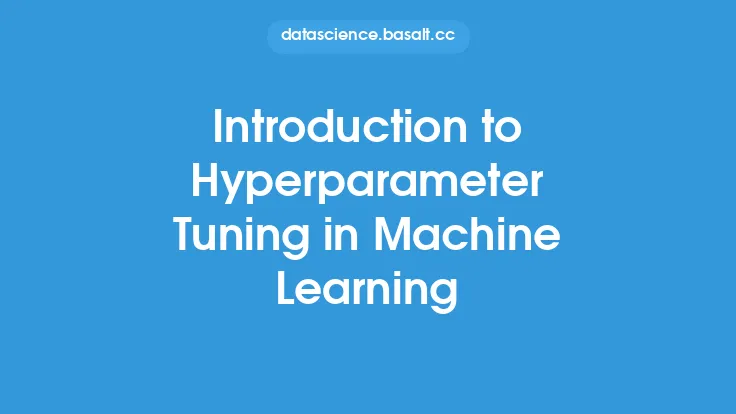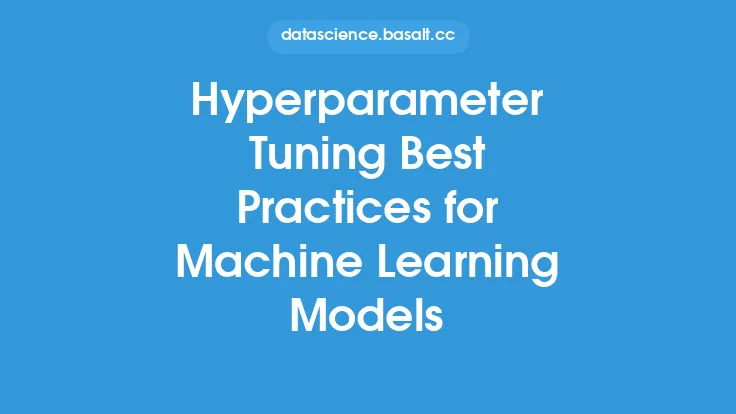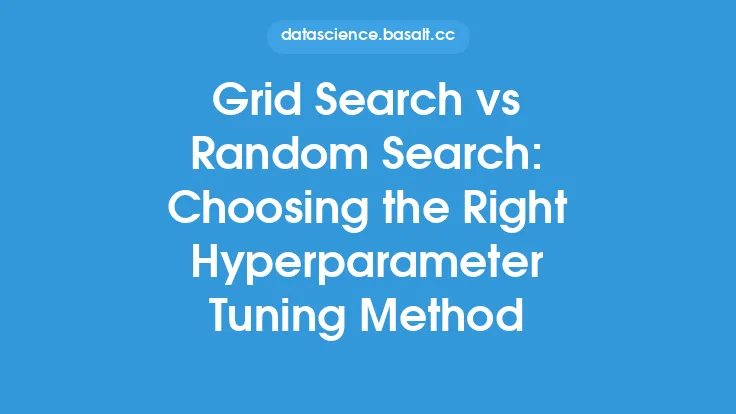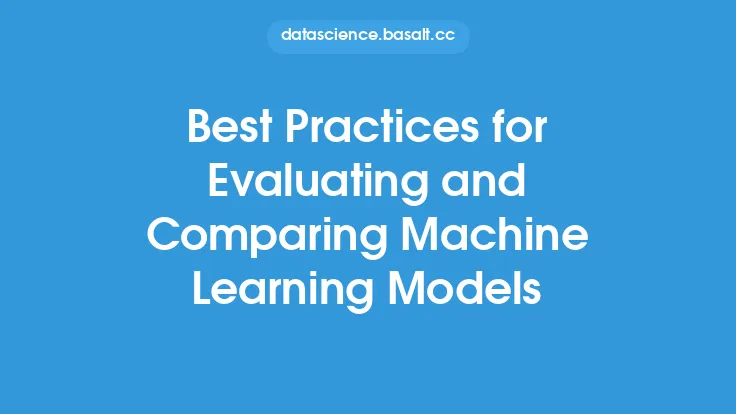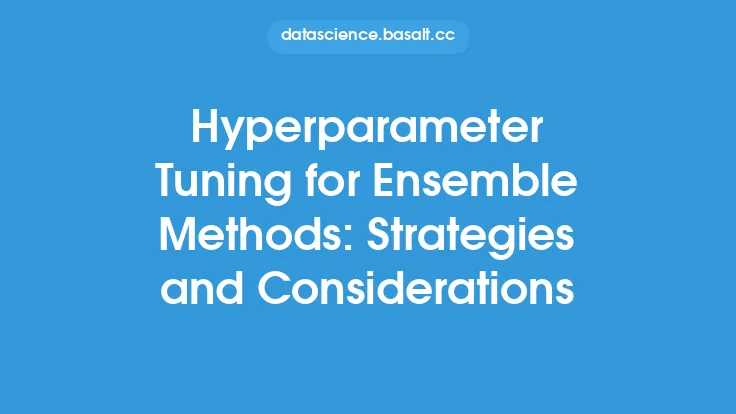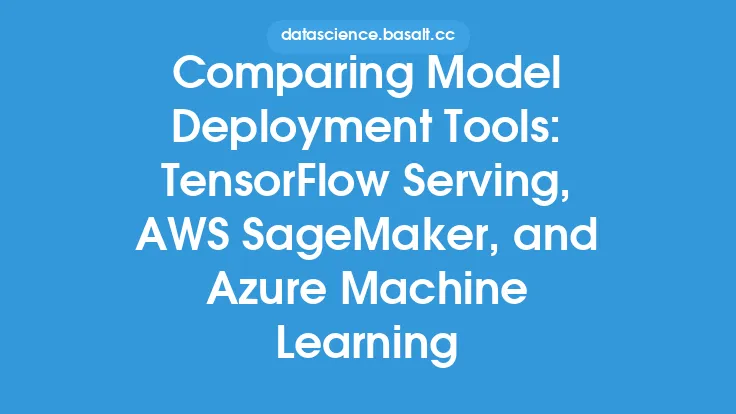Machine learning models are highly dependent on the choice of hyperparameters, which are parameters that are set before training a model. Hyperparameters can have a significant impact on the performance of a model, and finding the optimal set of hyperparameters can be a challenging task. One way to address this challenge is by automating hyperparameter tuning using machine learning libraries and frameworks. In this article, we will explore the various ways to automate hyperparameter tuning and the benefits of using machine learning libraries and frameworks for this purpose.
Introduction to Automated Hyperparameter Tuning
Automated hyperparameter tuning involves using algorithms and techniques to search for the optimal set of hyperparameters for a machine learning model. This can be done using various methods, including grid search, random search, Bayesian optimization, and gradient-based optimization. The goal of automated hyperparameter tuning is to find the set of hyperparameters that results in the best performance for a given model and dataset. Machine learning libraries and frameworks provide a range of tools and techniques for automating hyperparameter tuning, making it easier to find the optimal set of hyperparameters for a model.
Machine Learning Libraries for Hyperparameter Tuning
There are several machine learning libraries that provide tools and techniques for automating hyperparameter tuning. Some of the most popular libraries include scikit-learn, TensorFlow, and PyTorch. Scikit-learn provides a range of tools for hyperparameter tuning, including grid search and random search. TensorFlow and PyTorch provide tools for hyperparameter tuning, including gradient-based optimization and Bayesian optimization. These libraries provide a range of benefits, including ease of use, flexibility, and scalability.
Frameworks for Hyperparameter Tuning
In addition to machine learning libraries, there are also several frameworks that provide tools and techniques for automating hyperparameter tuning. Some of the most popular frameworks include Hyperopt, Optuna, and Ray Tune. Hyperopt provides a range of tools for hyperparameter tuning, including Bayesian optimization and gradient-based optimization. Optuna provides a range of tools for hyperparameter tuning, including Bayesian optimization and pruning. Ray Tune provides a range of tools for hyperparameter tuning, including Bayesian optimization and hyperband. These frameworks provide a range of benefits, including ease of use, flexibility, and scalability.
Techniques for Automated Hyperparameter Tuning
There are several techniques that can be used for automated hyperparameter tuning. Some of the most popular techniques include grid search, random search, Bayesian optimization, and gradient-based optimization. Grid search involves searching over a grid of possible hyperparameters, while random search involves searching over a random sample of possible hyperparameters. Bayesian optimization involves using a probabilistic model to search for the optimal set of hyperparameters, while gradient-based optimization involves using gradient descent to search for the optimal set of hyperparameters. These techniques provide a range of benefits, including ease of use, flexibility, and scalability.
Benefits of Automated Hyperparameter Tuning
Automated hyperparameter tuning provides a range of benefits, including improved model performance, increased efficiency, and reduced manual effort. By automating hyperparameter tuning, machine learning practitioners can focus on other aspects of model development, such as feature engineering and model selection. Automated hyperparameter tuning also provides a range of benefits for organizations, including improved model performance, increased efficiency, and reduced costs. By using machine learning libraries and frameworks for automated hyperparameter tuning, organizations can improve the performance of their models, reduce the time and effort required for model development, and increase the efficiency of their machine learning workflows.
Challenges and Limitations of Automated Hyperparameter Tuning
While automated hyperparameter tuning provides a range of benefits, there are also several challenges and limitations to consider. One of the main challenges is the computational cost of automated hyperparameter tuning, which can be significant for large datasets and complex models. Another challenge is the risk of overfitting, which can occur when a model is overly complex and fits the training data too closely. To address these challenges, machine learning practitioners can use techniques such as regularization, early stopping, and cross-validation. Additionally, machine learning libraries and frameworks provide a range of tools and techniques for addressing these challenges, including automated hyperparameter tuning, model selection, and ensemble methods.
Real-World Applications of Automated Hyperparameter Tuning
Automated hyperparameter tuning has a range of real-world applications, including computer vision, natural language processing, and recommender systems. In computer vision, automated hyperparameter tuning can be used to improve the performance of image classification models, object detection models, and segmentation models. In natural language processing, automated hyperparameter tuning can be used to improve the performance of language models, sentiment analysis models, and machine translation models. In recommender systems, automated hyperparameter tuning can be used to improve the performance of recommendation models, including collaborative filtering and content-based filtering. By using machine learning libraries and frameworks for automated hyperparameter tuning, organizations can improve the performance of their models, reduce the time and effort required for model development, and increase the efficiency of their machine learning workflows.
Future Directions for Automated Hyperparameter Tuning
The field of automated hyperparameter tuning is rapidly evolving, with new techniques and tools being developed all the time. Some of the future directions for automated hyperparameter tuning include the use of transfer learning, meta-learning, and multi-task learning. Transfer learning involves using pre-trained models as a starting point for automated hyperparameter tuning, while meta-learning involves using machine learning models to learn how to optimize hyperparameters. Multi-task learning involves using a single model to perform multiple tasks, including automated hyperparameter tuning. By using these techniques, machine learning practitioners can improve the performance of their models, reduce the time and effort required for model development, and increase the efficiency of their machine learning workflows. Additionally, the use of automated hyperparameter tuning in edge cases, such as real-time systems and embedded systems, is an area of ongoing research and development.
